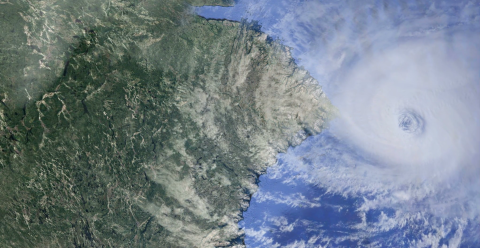EOSC 114 · The Catastrophic Earth: Natural Disasters

Introduction to causes and physical characteristics of disasters such as volcanic eruptions, earthquakes, tsunamis, hurricanes, storm surge, thunderstorms, tornadoes, landslides, wind waves, meteor impacts, mass extinctions.
Syllabus
Module 1. Fragile Systems 1
An introduction to the course, the instructors and the Earth as a system.
Module 2. Impacts and Extinctions
Looking at the biggest of all natural disasters, mass extinction events. We will delve into the Earth's geological history and the times when life on Earth almost didn't make it! You probably know that a large impact led to the extinction of the dinosaurs.....but could this happen again?
Module 3. Waves
Waves can be pretty fun, just think of body boarding or surfing, but they can be dangerous too. In this module we will take a look at different types of waves and their oceanographic disasters. How do they gain their energy and where might you be at the most risk?
Module 4. Storms
Investigating the cause and affects of atmospheric disasters. Where should you take cover in a tornado or thunderstorm, why do hurricanes cause such devastation?
Module 5. Earthquakes
In Vancouver we sit on the boundary of two tectonic plates, large sections of the Earth's rigid outer layers that are moving towards each other. So in Vancouver, as with many other places around the world we need to understand and be prepared for earthquakes.
Module 6. Landslides
In BC we have beautiful mountains and a lot of rain, these are the perfect combination for getting lots of landslides. We will look at the different types of landslides, the material and movement that characterizes them, and how to detect unstable areas and mitigate against landslides.
Module 7. Volcanoes
Volcanoes are found all over the world, including in BC, where magma from depth makes it way to the surface. We will investigate different types of eruptions and volcanoes, and the reasons some are much more deadly than others. We will discuss the ways in which scientists monitor volcanoes and predict their behaviour.
Module 8. Fragile Systems Part 2
A final wrap up thinking about the Earth as a system, how our natural disasters are related to each other, and how they might be affected by the changing climate.
Course Content
This is an in-person course designed to give you a collaborative learning experience. This course is aimed at non-science students with little to no background in earth, ocean or atmospheric sciences. Throughout the course we will investigate different natural disasters to discover their causes and physical characteristics. We will look at the energy involved, the places where they commonly occur, and the ways we monitor and mitigate their impact on local communities. We will also discuss how our natural disasters relate to human-induced climate change and what we might expect to see moving into the future.